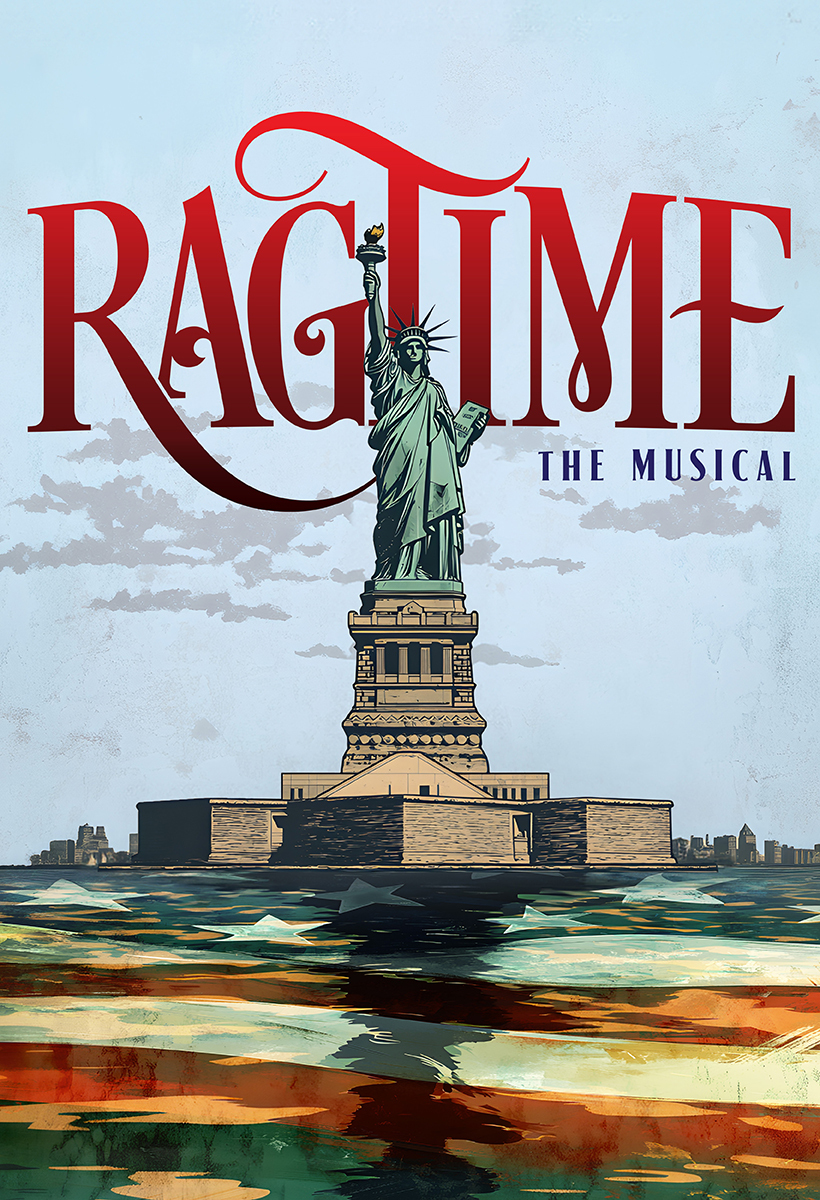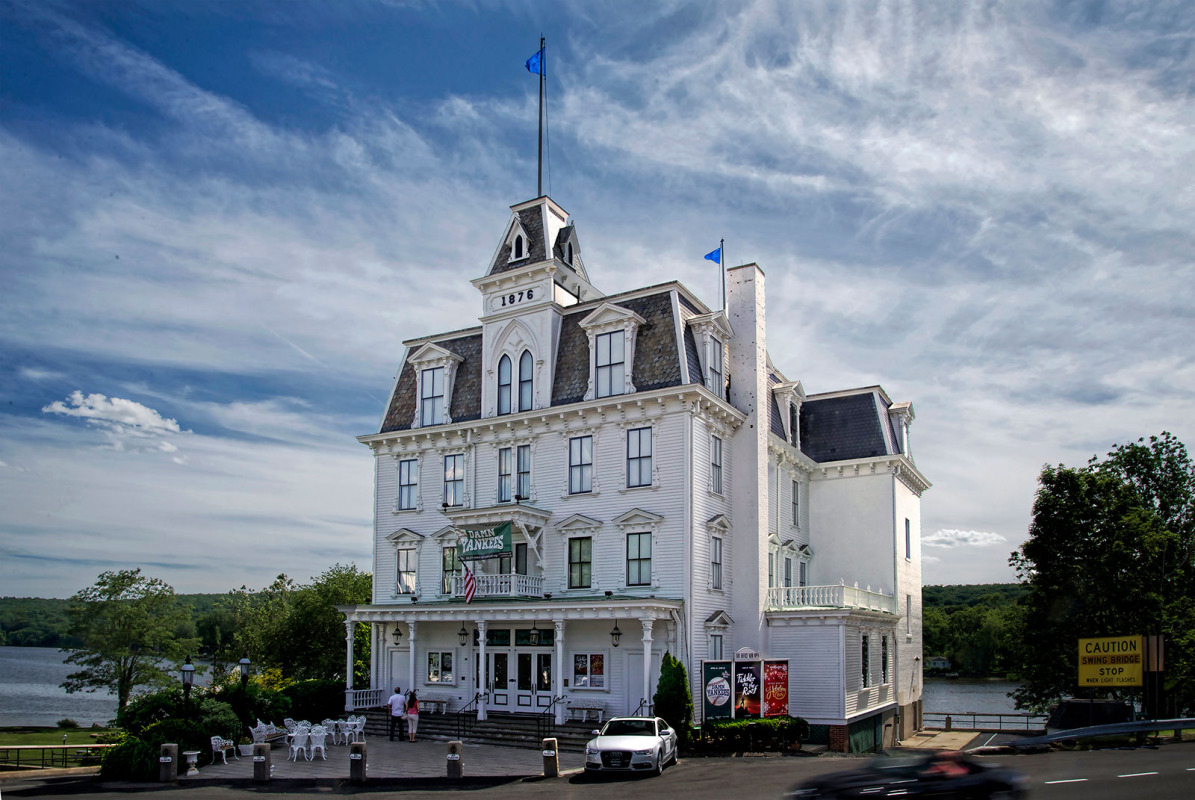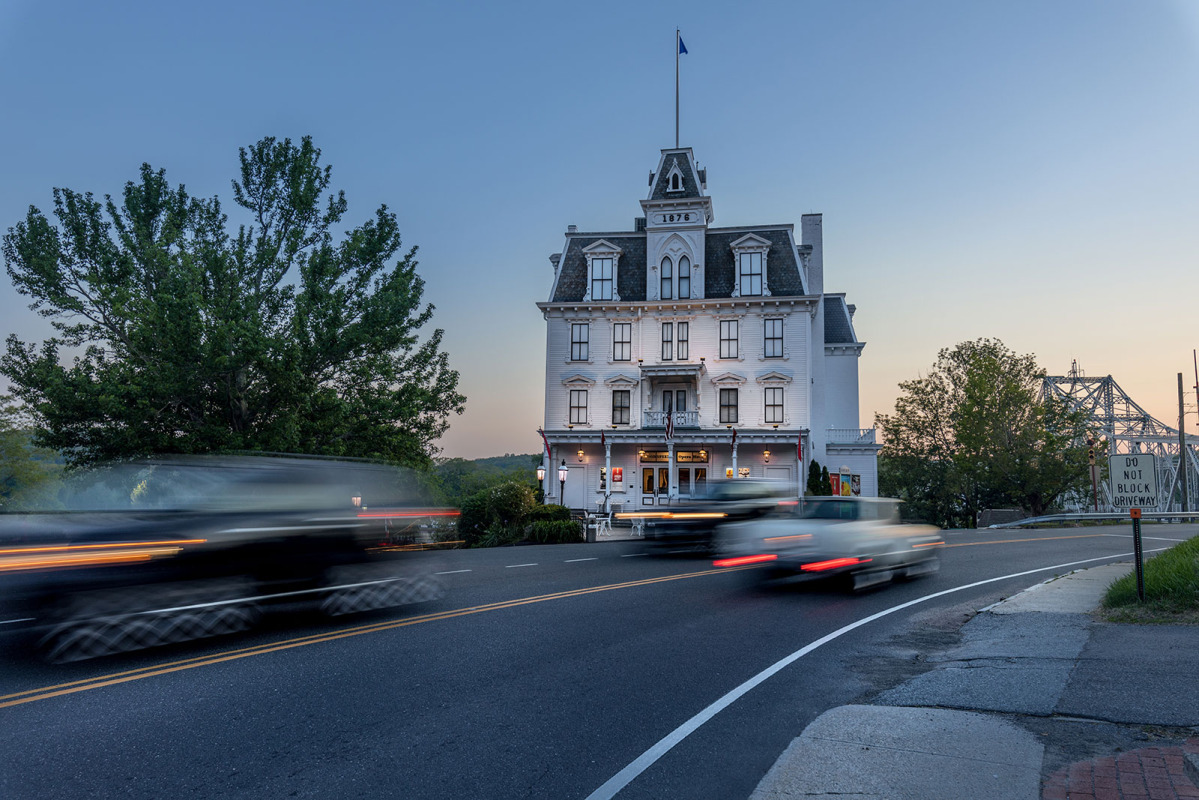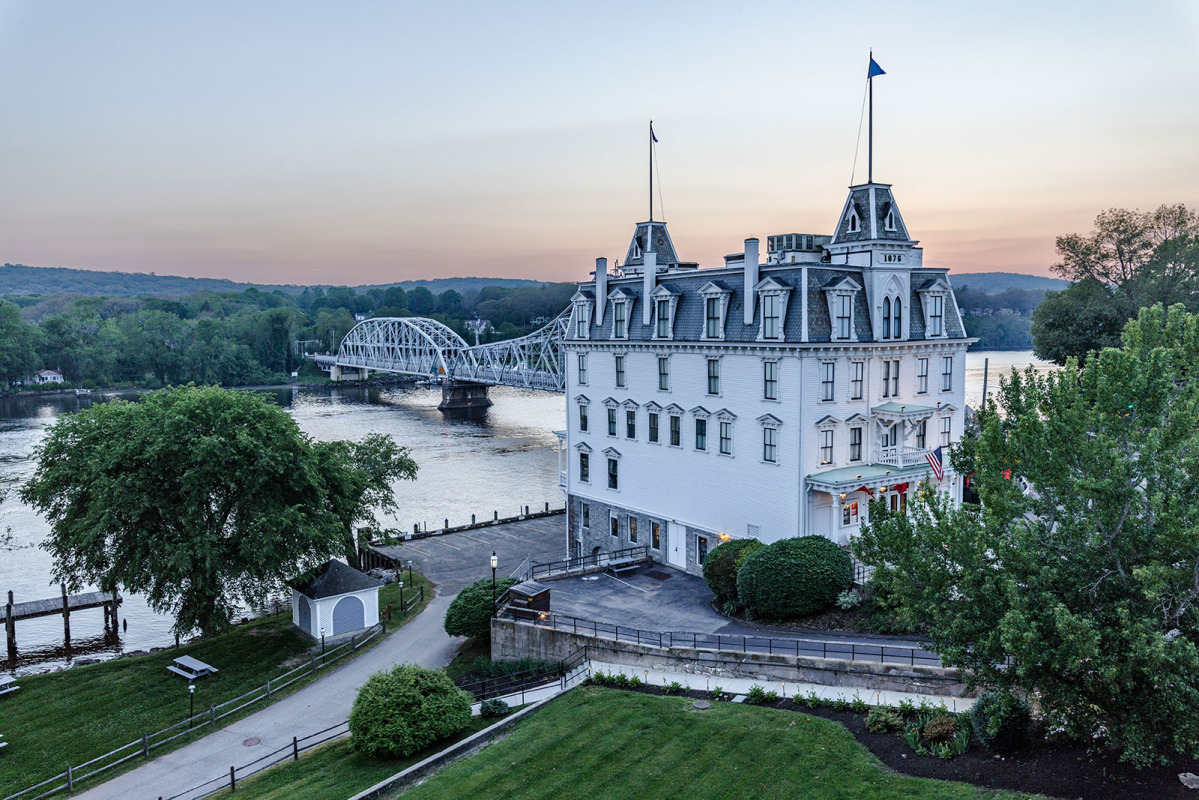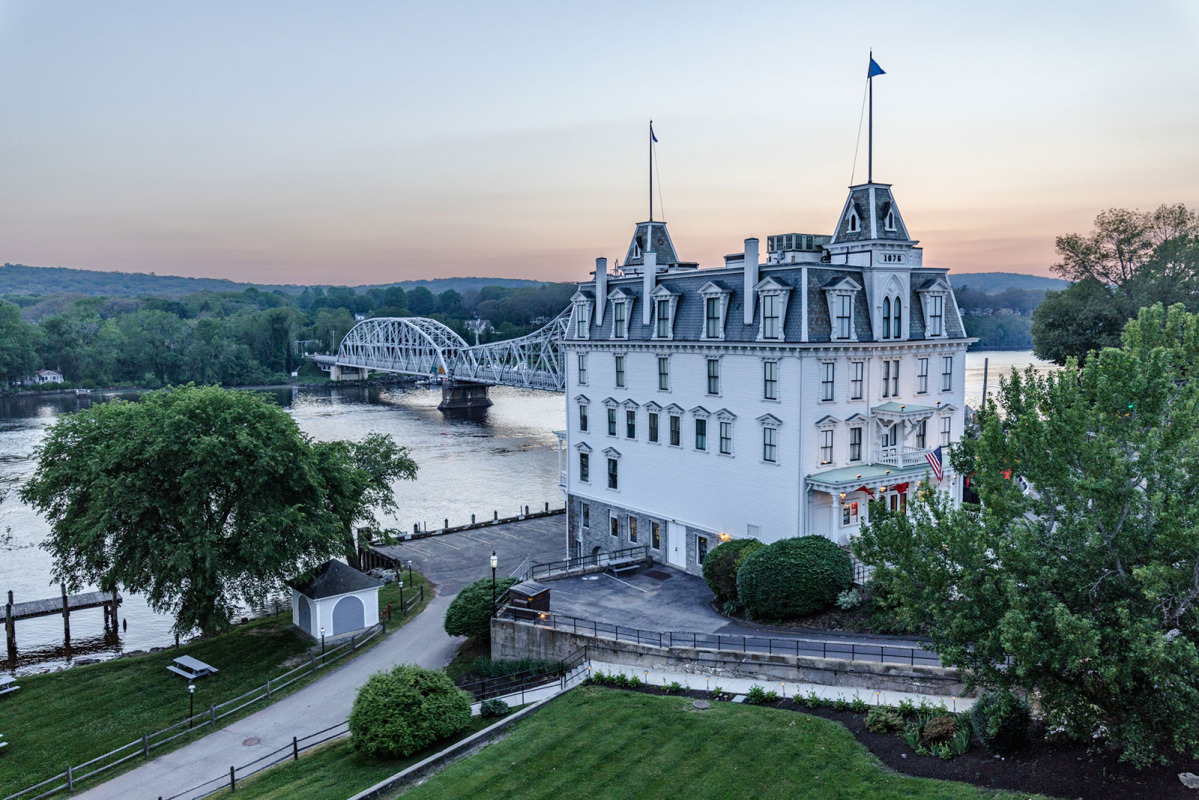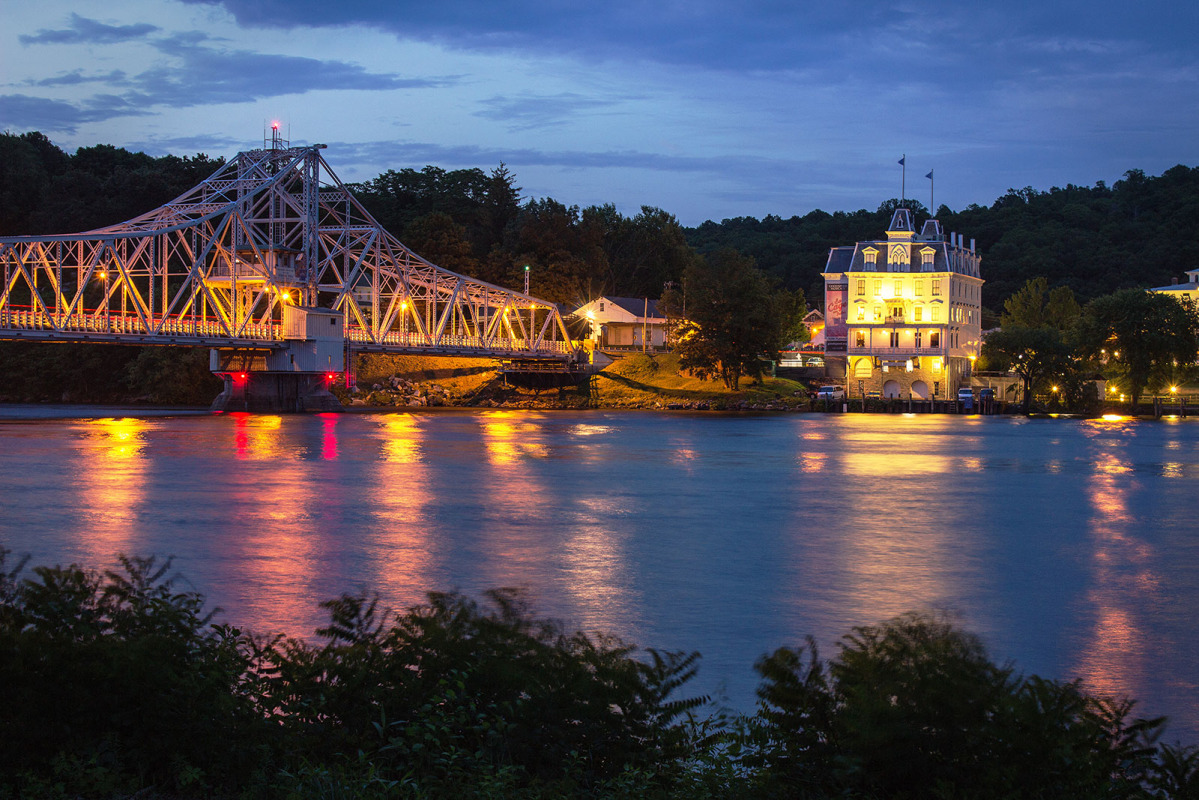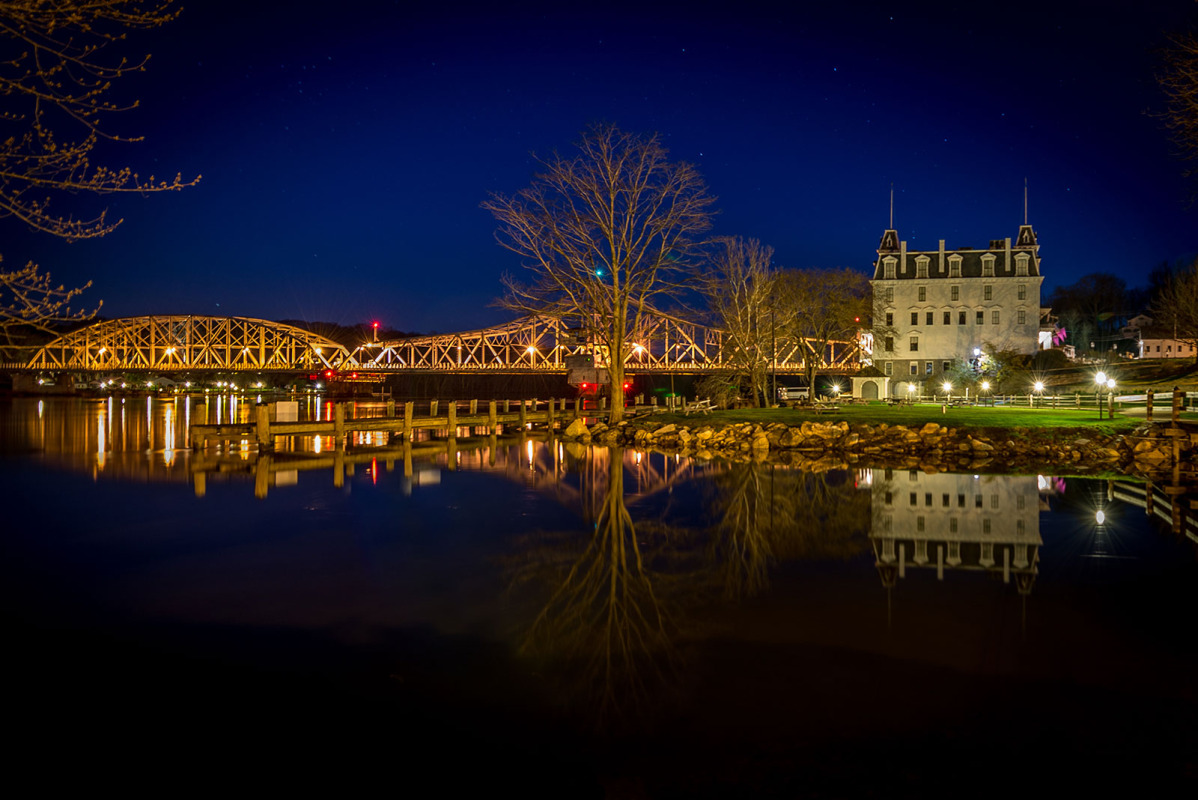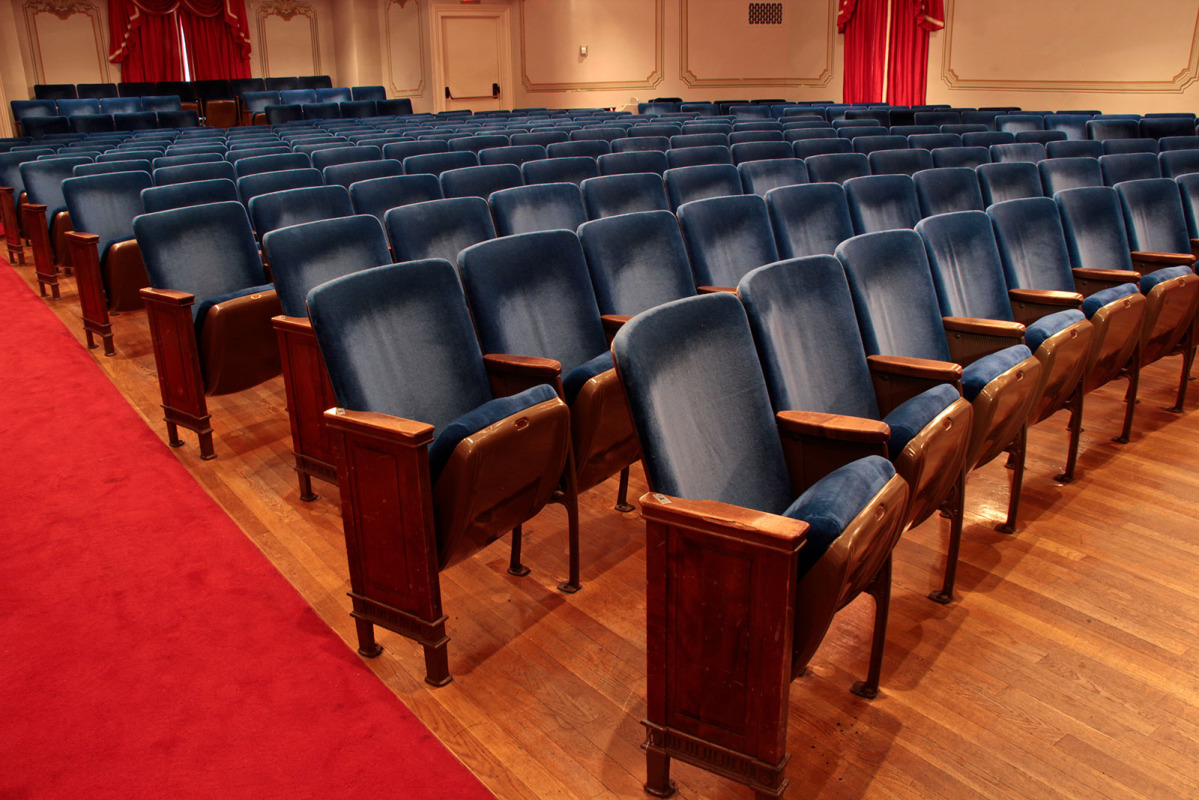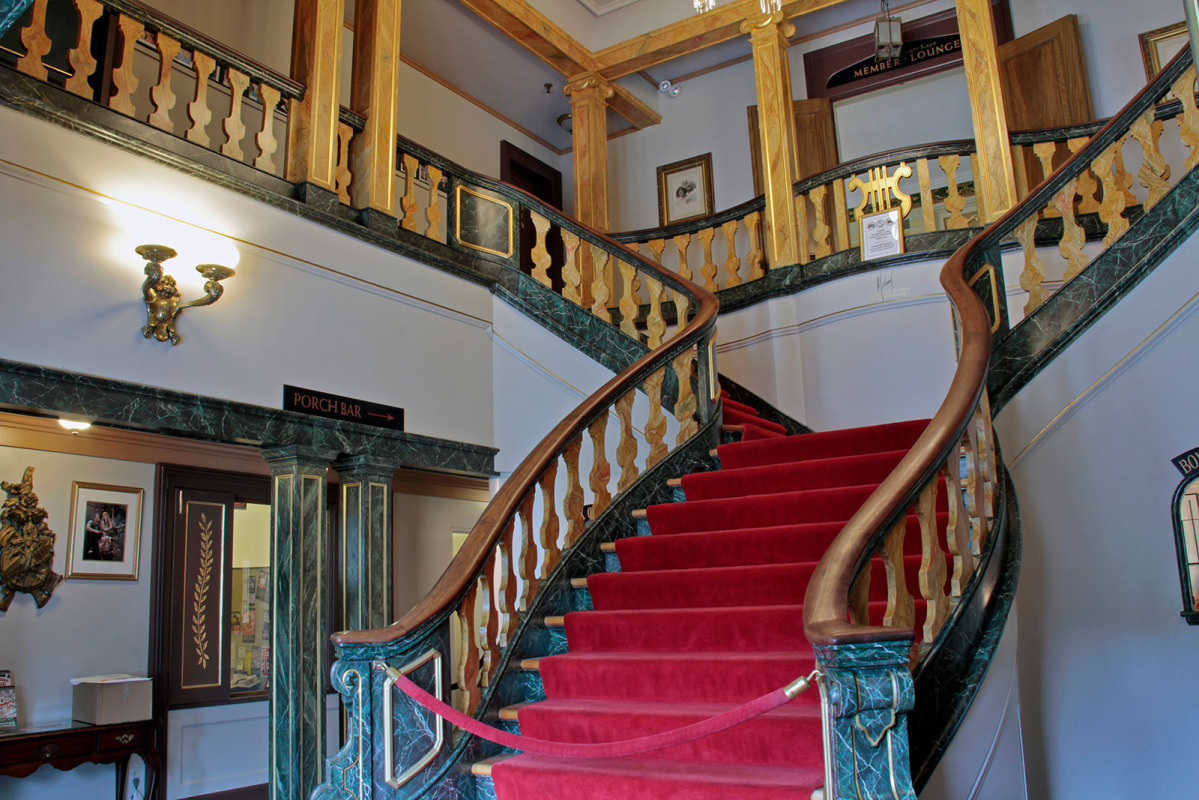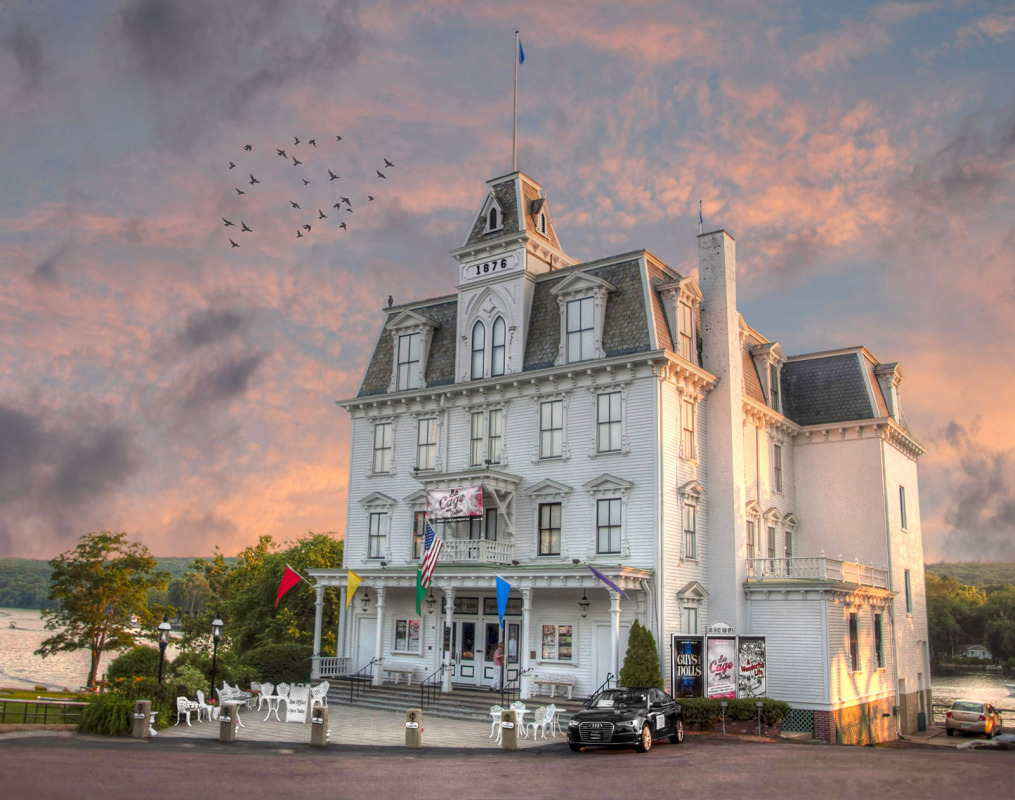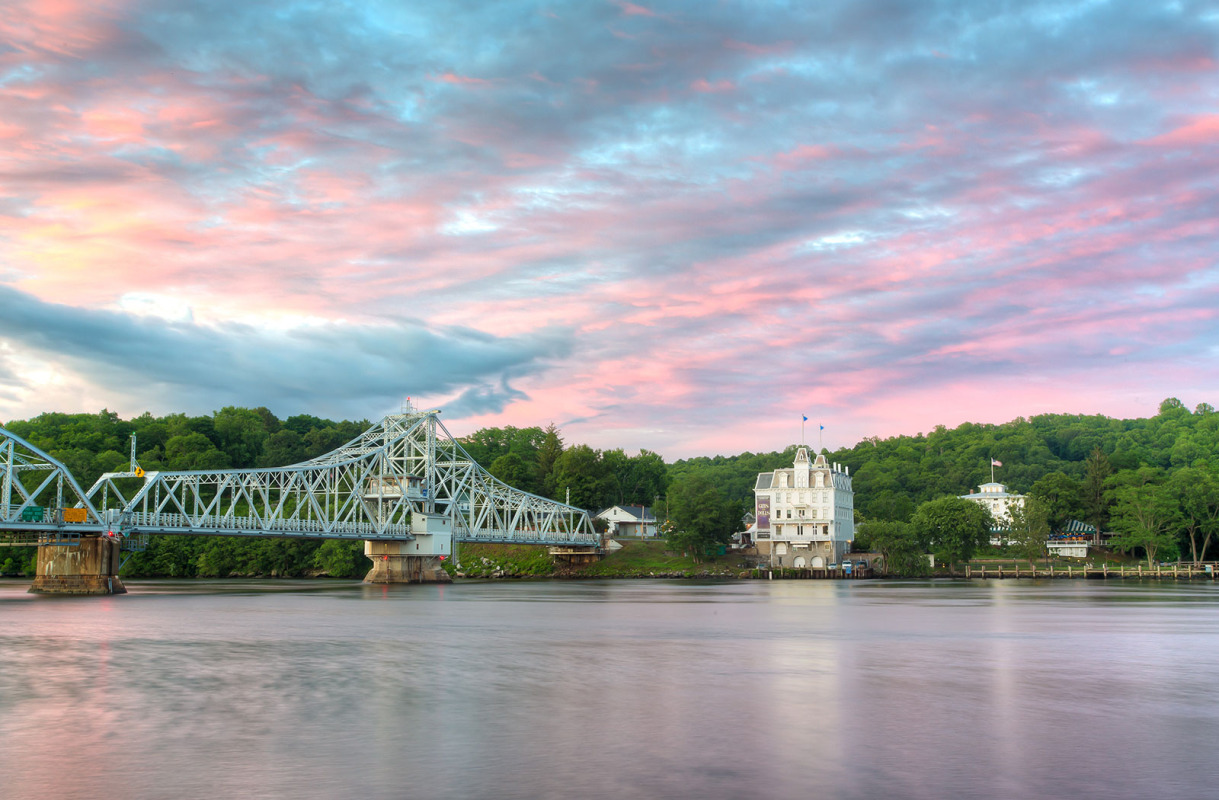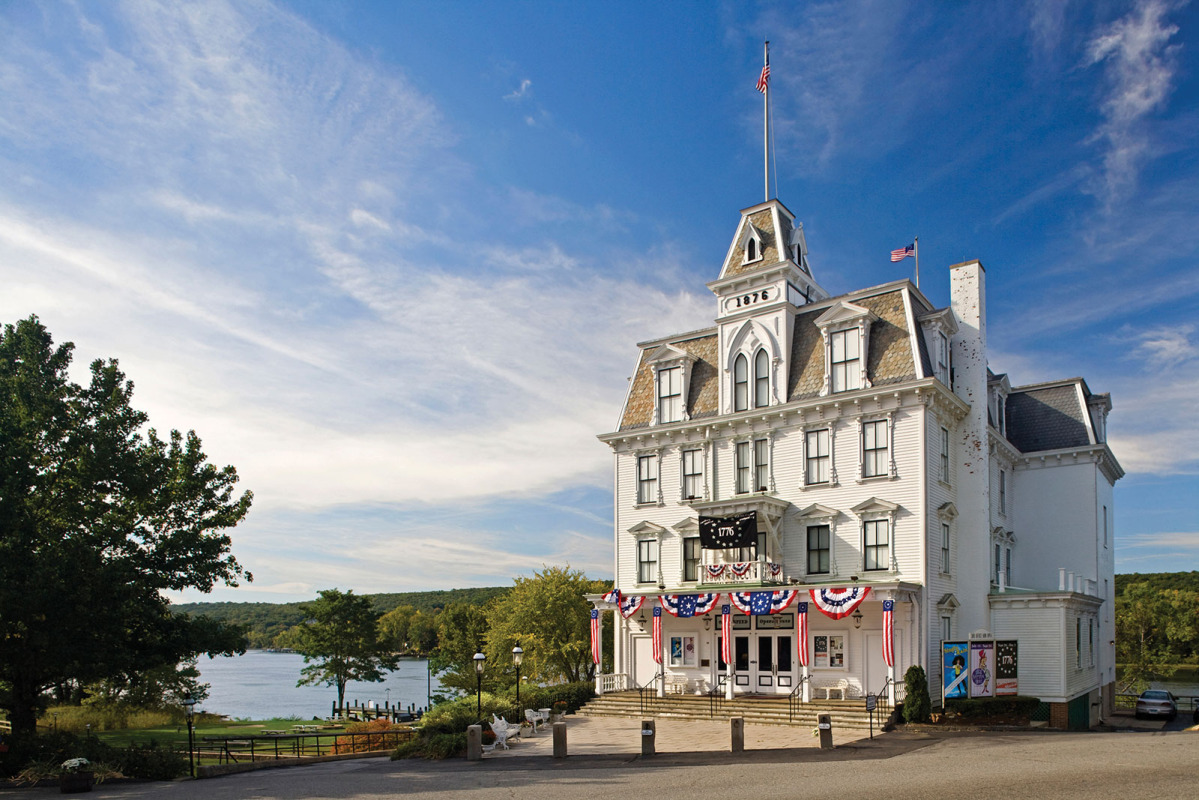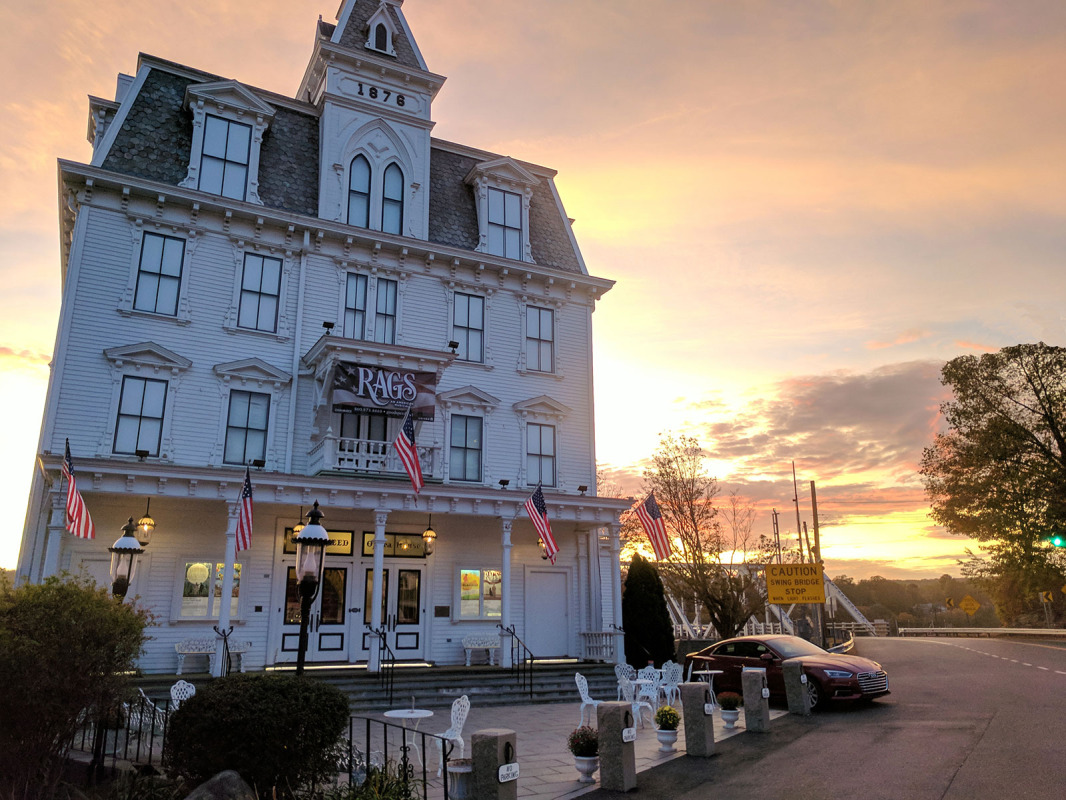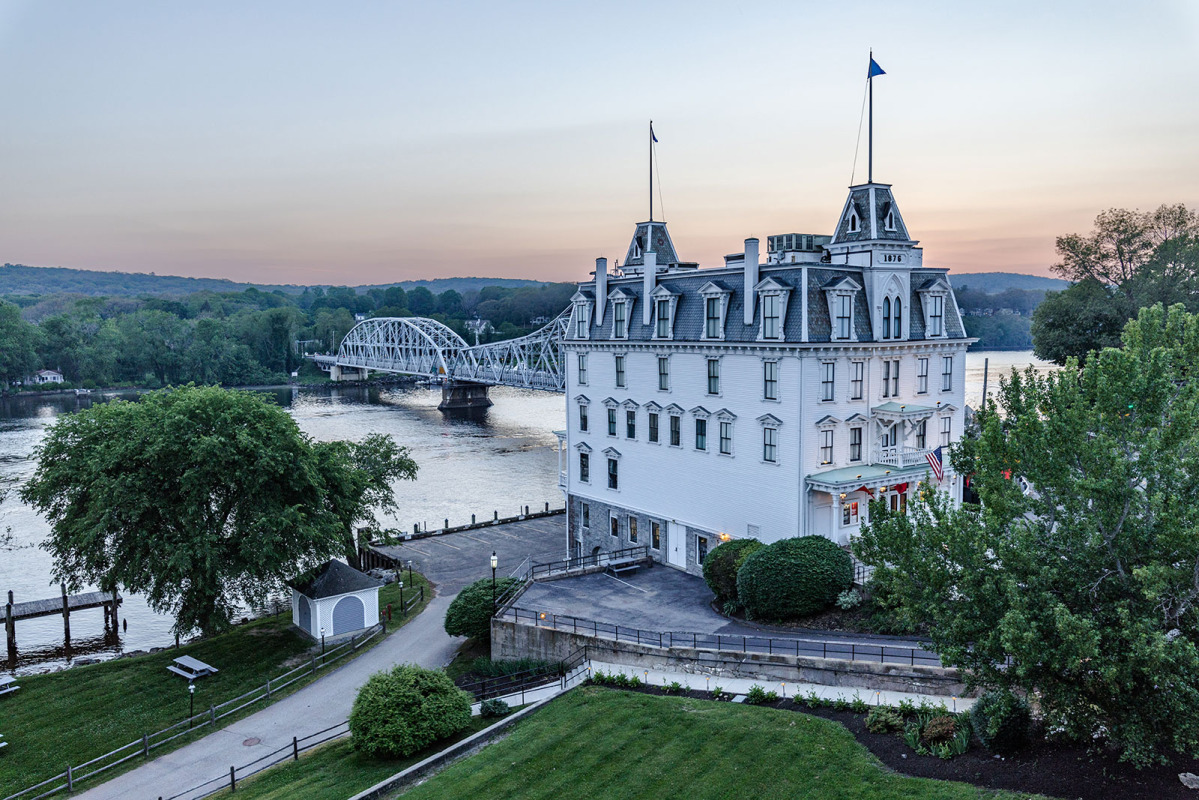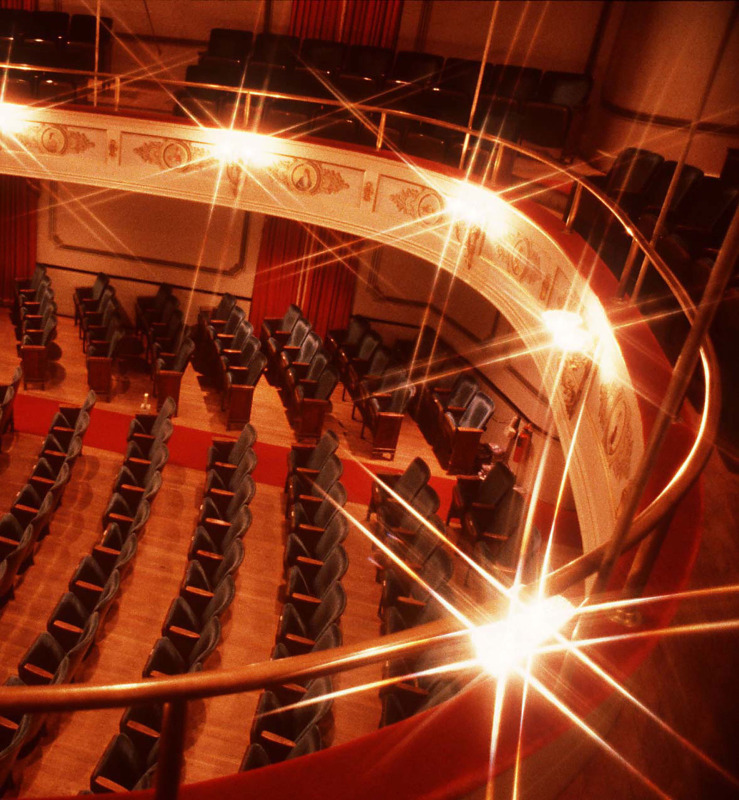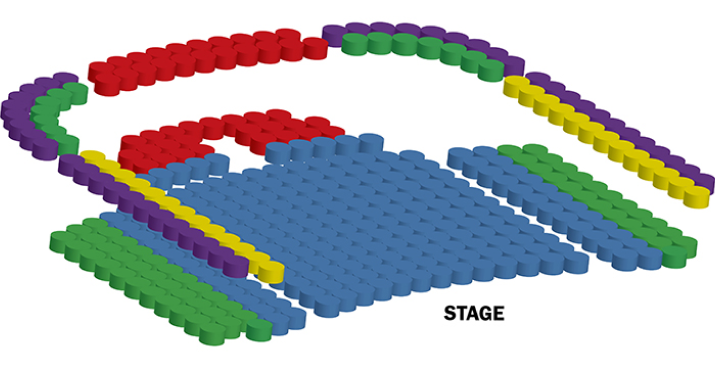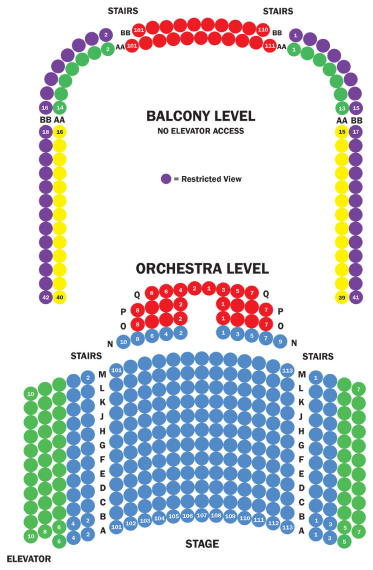The Goodspeed has endured as a majestic presence on the Connecticut River since it was built as the Goodspeed Opera House in 1876 by William H. Goodspeed, shipping and banking magnate and avid theatre lover. Since that time The Goodspeed has lived two lives: the first as a bustling center of commerce housing a theatre, professional offices, steamboat passenger terminal, and a general store; and the second, after a period of neglect and deterioration, as a magnificent professional musical theatre fully restored in 1963 to its original splendor.
Goodspeed's history goes back to its opening night on October 24, 1877, when a repertory group presented the comedy Charles II and the farces Box and Cox and Turn Him Out. Featured performers of the day were brought to East Haddam by steamboat, many directly from theatres in New York.
After William Goodspeed's death, the theatre was eventually sold and used as a storage depot for the State Highway Department. The building was marked for demolition in 1958, but local preservationists became interested, and in 1959 the Goodspeed Opera House Foundation was organized to restore and reactivate the theatre. With the cooperation of the State of Connecticut and the support of donor-members of the Foundation, The Goodspeed was restored and rededicated on June 18, 1963, with the opening of the musical Oh, Lady! Lady!!
The theater in the Victorian-style building is located on the fourth floor of the tallest wooden structure on the Connecticut River, and was constructed in 1876. A new stage was built over the original and incorporates what were formerly audience boxes into the downstage left and right areas. The boxes now serve as actor entrances below and lighting positions above.
The stage is raked 3/16" to the foot and has three permanent motorized winch tracks, in-one, in-two, and in-three. The in-one and in-two tracks are generally split on center to provide independent left and right tracks, while the in-three is rigged to travel full-stage. All three configurations have some flexibility and all winches are independent variable-speed DC drives, controlled from various positions in the wings.
The grid at The Goodspeed consists of 2" x 7" microlam joists installed in January 1995, which resemble the original wooden beams. Drops are flown using 6" diameter roll tubes and traveler track is used extensively to move sliders, drapes, and other scenery. Electrics and hard scenic masking are flown using block and falls and are dead hung below the grid; all flying units and drops are custom rigged for each production.
Learn more about The Saviors of the Goodspeed Opera House who spearheaded the campaign to save the building from the wrecking ball.
